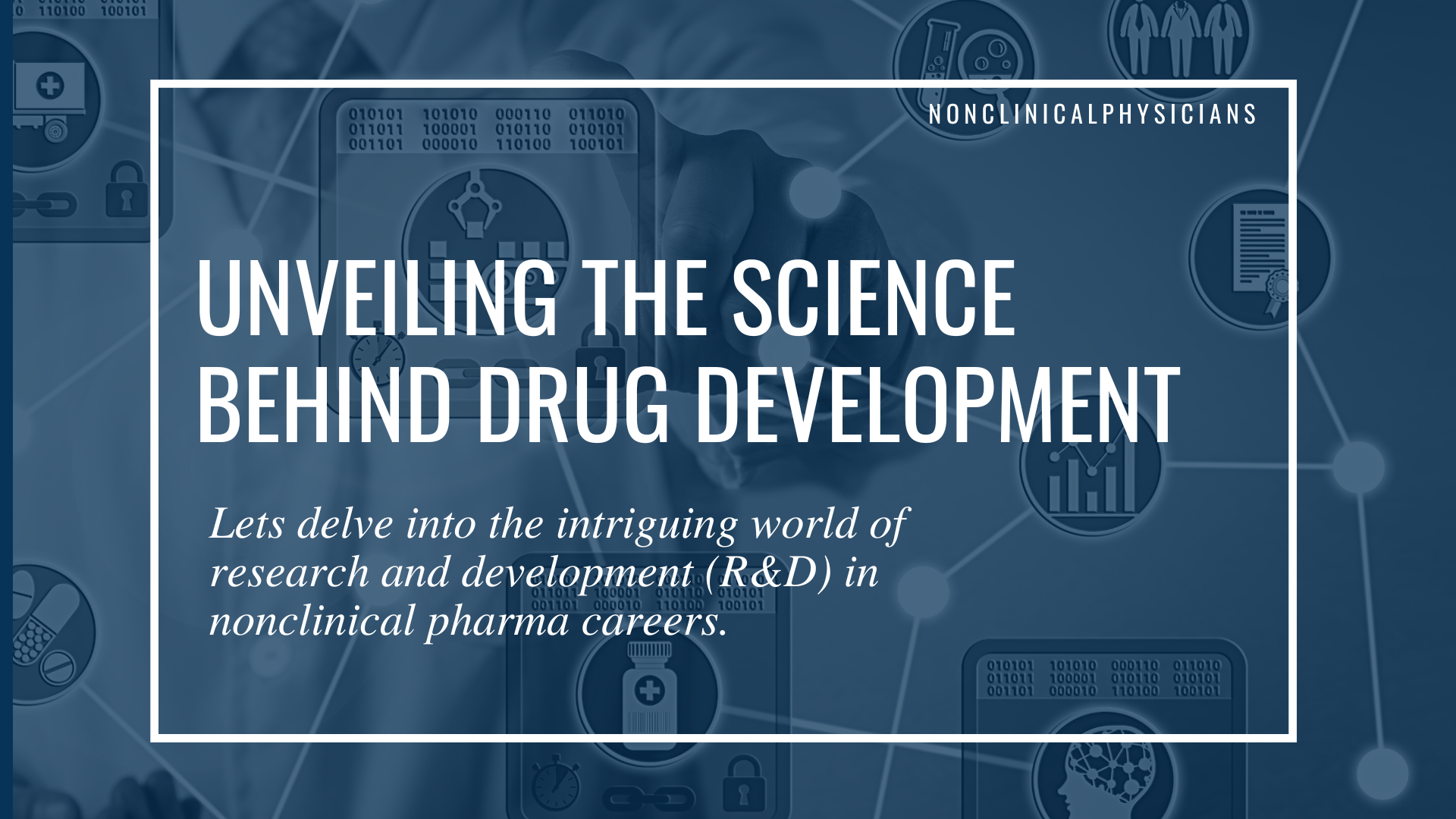Unveiling the Science Behind Drug Development
Let's delve into the intriguing world of research and development (R&D) in nonclinical pharma careers. Today, we explore the critical role played by nonclinical scientists in the captivating realm of drug development. From preclinical studies to groundbreaking discoveries, let's uncover the science behind this essential aspect of the pharmaceutical industry.
Nonclinical R&D: A Foundation for Success
In the field of pharmaceuticals, nonclinical R&D serves as the backbone of drug development. Nonclinical scientists conduct extensive research and preclinical studies to evaluate the safety and efficacy of potential drugs before they enter human trials. They investigate various aspects, including drug absorption, distribution, metabolism, and excretion, to optimize dosing regimens and ensure patient safety. Most of the physicians involved in these activities have moderate to extensive previous experience in research and often hold a Ph.D. in a relevant field.
The Process of Preclinical Studies
During preclinical studies, nonclinical scientists design and conduct experiments to assess a drug's efficacy and safety. These studies often involve testing on animals or in vitro models. Scientists evaluate the drug's therapeutic effects on disease models and thoroughly investigate potential adverse reactions or toxicities. The data collected during this stage provides crucial information for regulatory submissions and helps guide decision-making for clinical trials.
Tools and Techniques in Nonclinical R&D
Nonclinical R&D relies on a wide range of techniques and technologies. Scientists utilize cell culture, animal models, molecular biology, imaging technologies, and advanced analytical methods to gather comprehensive data. These tools enable them to evaluate drug efficacy, determine dosage, assess toxicity, and identify potential risks associated with the drug.
Skills and Qualifications for Nonclinical R&D Careers
Nonclinical R&D careers require a strong scientific background, critical thinking skills, attention to detail, and effective communication abilities. Many professionals in this field hold advanced degrees in pharmacology, toxicology, or related disciplines, which provide them with the necessary knowledge and expertise.
Growth and Advancement Opportunities
Nonclinical R&D offers numerous opportunities for growth and advancement. With experience and expertise, professionals can progress to leadership roles, become project managers, or contribute to strategic decision-making within research organizations. There are also possibilities for specialization in specific therapeutic areas or emerging fields.
The Impact of Nonclinical R&D
The contributions of nonclinical scientists in R&D are invaluable. Their meticulous work ensures the safety and efficacy of pharmaceutical products. By laying the groundwork for clinical trials and guiding drug development decisions, they play a vital role in bringing innovative treatments to patients and improving healthcare outcomes.
Conclusion:
Nonclinical research and development is an integral part of the pharmaceutical industry. Through preclinical studies, nonclinical scientists assess drug safety, efficacy, and potential risks before advancing to human trials. Their expertise, combined with advanced techniques and technologies, is crucial in shaping the future of healthcare. By delving into the science behind drug development, we gain a deeper appreciation for the essential contributions of nonclinical R&D professionals in improving patient care and advancing the field of medicine.








Leave A Comment
You must be logged in to post a comment.